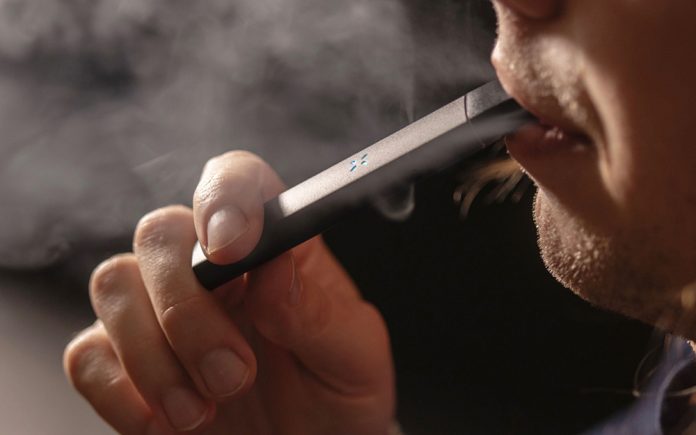
BY RUTH HILL R.N.
On October 23, 2019, my article on these pages shared this: “So far, the CDC has found no single compound that is responsible for vape associated pulmonary injury (VAPI). A report in the New England Journal of Medicine from the Mayo Clinic detailing lung tissue samples from 17 patients with lung injury demonstrated a pattern of injury similar to a chemical fume exposure or a chemical burn that is found in mustard gas exposure during World War I. Many vape pens heat to various temperatures. High temperatures can combust illicit compounds into deadly toxins”. The nation was obsessed with this crisis pre COVID.
Now the Chinese virus has caused many national and state processes to end. The obsession with COVID took the ball off the devastating lethal diseases that were exacerbated by the lock-down i.e. increased suicides, child abuse, dementia deaths, heart disease and other screenings for cancer and immunizations. The lethal process that causes death during the coronavirus and EVALI (the CDC’s acronym for e-cigarette or vaping-related lung injuries) is the immune syndrome called “cytokine storm.”
The CDC stopped tracking vaping-related incidents impacting the research on this lethal disease. Treatments for cytokine storm in COVID-19 related complications may be similar to treatments for EVALI.
The latest update on this subject is by Project CBD which reported: “By February 2020, sixty-eight people in the United States, including teenagers and seniors, had died because of this mysterious respiratory illness and nearly 3000 were hospitalized with problems ranging from shortness of breath to severe nausea and coughing up blood. The CDC identified vitamin E acetate, a thickening agent added to poor quality cannabis oil extracts, as the likely culprit in cases of respiratory failure linked to vaping.” https://www.projectcbd.org/science/vaping-crisis-one-year-later
Vitamin E acetate was found in [vape] product samples and in patients’ lung fluid samples. EVALI patients are diagnosed with lipid pneumonia, a rare inflammatory condition that occurs when fat or oil enters the alveolar sacs of the lungs. These symptoms similar to other kinds of pneumonia can be triggered by a bacterial, fungal, or viral infection.
Investigative reporting by Leafly showed vitamin E acetate is “among a gang of toxins” identified in illicit vape cartridges, including squalene, a skin cream ingredient, that should not be inhaled. A group of doctors advised in a letter to the Journal of American Medicine that the presence of lipid-laden immune cells in the lungs “should be interpreted with caution because it may merely be a marker of exposure rather than a marker of toxicity.” https://www.amjmed.com/article/S0002-9343(20)30003-6/fulltext
Most interesting is a review by Adrian Devitt-Lee, Project CBD’s chief science writer, which found several examples of case reports that involved exposure to “synthetic cannabinoids,” a class of difficult-to-detect and potentially lethal research-turned-street compounds, which wreak havoc by disrupting the endocannabinoid system. All of these case reports showed a consistent set of symptoms (ground glass opacities, ruptured blood vessels, oxygen deprivation as lungs fill with fluid, etc.) that align with the CDC’s diagnostic criteria for vaping-related pulmonary disease.
A study by University of Mississippi scientists in the Journal of Dietary Supplements, found thirteen of the 25 available hemp-derived vape oil products contained less than 50 percent of the amount of cannabidiol (CBD) that was indicated on the label; only 3 products contained within 20 percent (plus or minus) of the CBD content claimed on the label; and 3 “CBD” products had no measurable cannabidiol whatsoever.
According to a recent Yale University School of Public Health study, consumers in the five states with the highest per capita incidence of EVALI do not have access to regulated, lab-certified vape oil products made by state-licensed manufacturers. The bottom line: the existence of a legal, regulated cannabis market, warts, and all, reduces the use of dangerous vape oil cartridges, another rational for reclassification out of the Schedule I category which includes heroin and PCP.
Send comments to info@ruthahillrn.com twitter log @RuthAHillRN












































